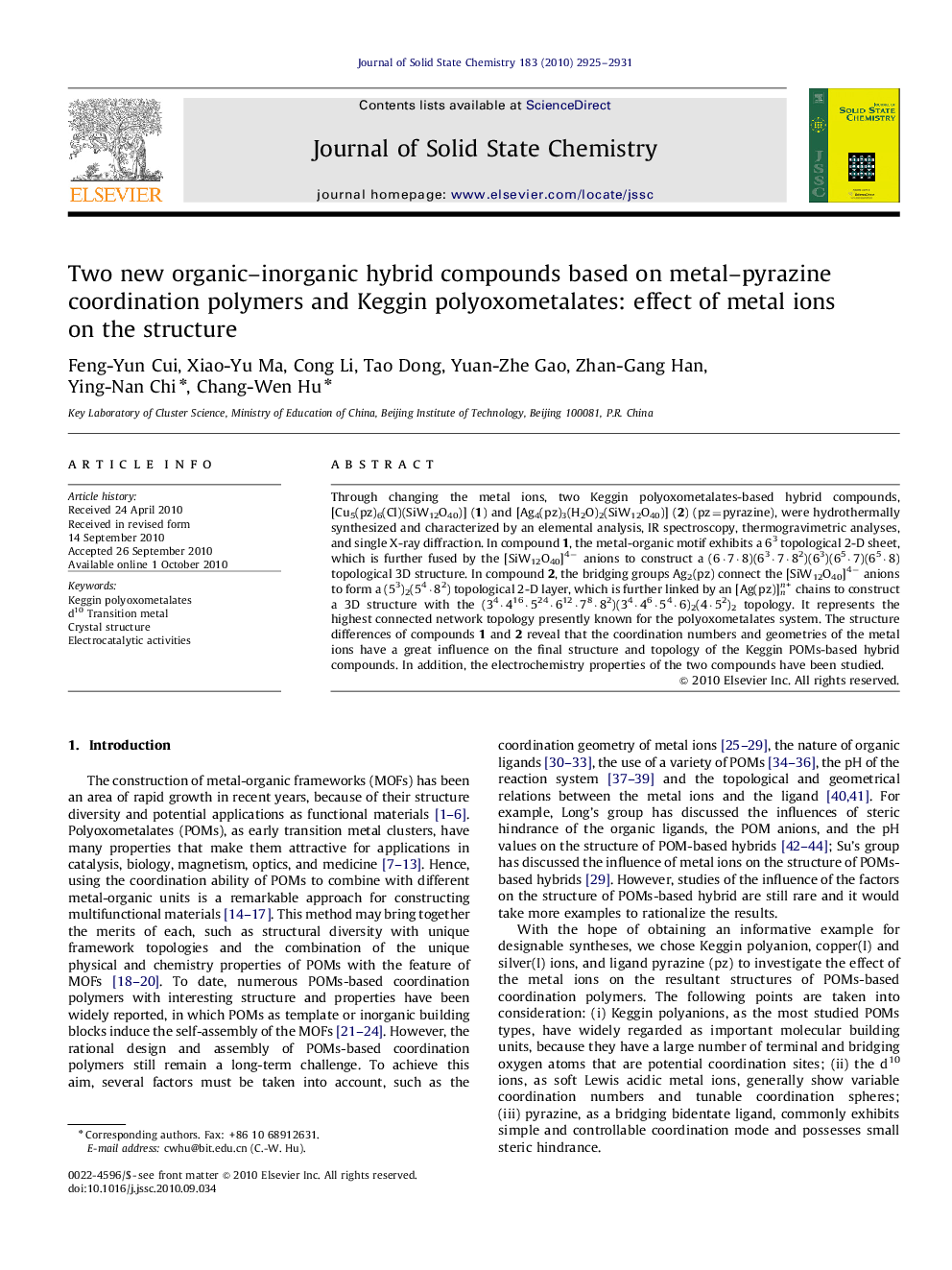| Article ID | Journal | Published Year | Pages | File Type |
|---|---|---|---|---|
| 1333239 | Journal of Solid State Chemistry | 2010 | 7 Pages |
Through changing the metal ions, two Keggin polyoxometalates-based hybrid compounds, [Cu5(pz)6(Cl)(SiW12O40)] (1) and [Ag4(pz)3(H2O)2(SiW12O40)] (2) (pz=pyrazine), were hydrothermally synthesized and characterized by an elemental analysis, IR spectroscopy, thermogravimetric analyses, and single X-ray diffraction. In compound 1, the metal-organic motif exhibits a 63 topological 2-D sheet, which is further fused by the [SiW12O40]4− anions to construct a (6·7·8)(63·7·82)(63)(65·7)(65·8) topological 3D structure. In compound 2, the bridging groups Ag2(pz) connect the [SiW12O40]4− anions to form a (53)2(54·82) topological 2-D layer, which is further linked by an [Ag(pz)]nn+ chains to construct a 3D structure with the (34·416·524·612·78·82)(34·46·54·6)2(4·52)2 topology. It represents the highest connected network topology presently known for the polyoxometalates system. The structure differences of compounds 1 and 2 reveal that the coordination numbers and geometries of the metal ions have a great influence on the final structure and topology of the Keggin POMs-based hybrid compounds. In addition, the electrochemistry properties of the two compounds have been studied.
Graphical AbstractTwo new highly connected Keggin POMs-based hybrids have been synthesized by changing metal ions under hydrothermal conditions and the effect of metal ions on the final structure and topology of the POMs-based hybrid compounds was discussed.Figure optionsDownload full-size imageDownload as PowerPoint slide
